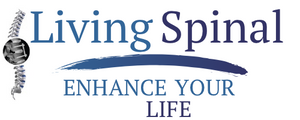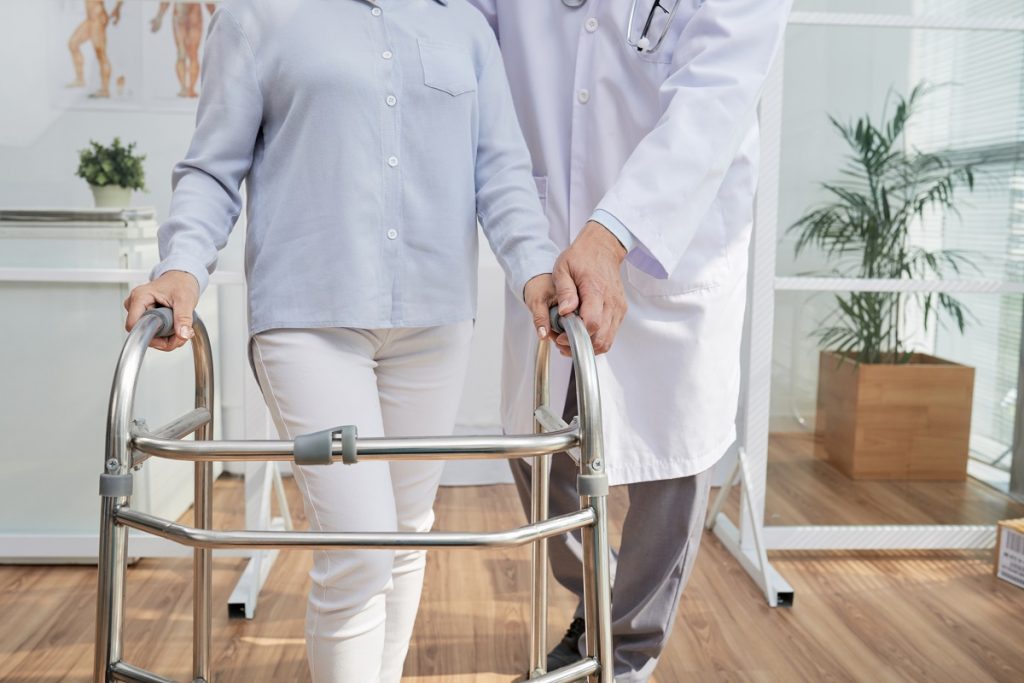Equipment for Stroke Patients at Home - Living Spinal
Posted by Living Spinal on Oct 14th 2025
Equipment for Stroke Patients at Home - Tools and Devices to Support Stroke Recovery
Recovering from a stroke can be a long and challenging process, but the right equipment and therapy tools can make a significant difference. Having equipment for stroke patients at home allows individuals to continue their rehabilitation outside of a clinical setting and build strength, coordination, and mobility at their own pace. Many modern stroke rehabilitation tools are designed to help patients regain independence, improve balance, and restore confidence in daily movement.
This guide explores some of the most important stroke recovery tools and rehabilitation equipment available for use at home, including devices that support movement, assist with exercise, and enhance daily living for stroke survivors.
The Importance of Stroke Recovery Equipment at Home
Stroke recovery does not stop once the patient leaves the hospital or therapy center. Consistent exercise and mobility training are vital for regaining function. Stroke recovery equipment at home makes this possible by providing the support needed for repetitive and targeted movement, which is key to stimulating the brain’s ability to recover and form new connections. Equipment for stroke recovery helps individuals continue rehabilitation exercises daily, improving muscle strength, flexibility, and coordination.
For older adults, stroke recovery equipment for seniors offers an added level of safety and ease of use. Many of these products are lightweight, adjustable, and designed to help reduce the risk of falls while encouraging continued movement and activity.
The StandNWalk Gait Trainer for Stroke Recovery
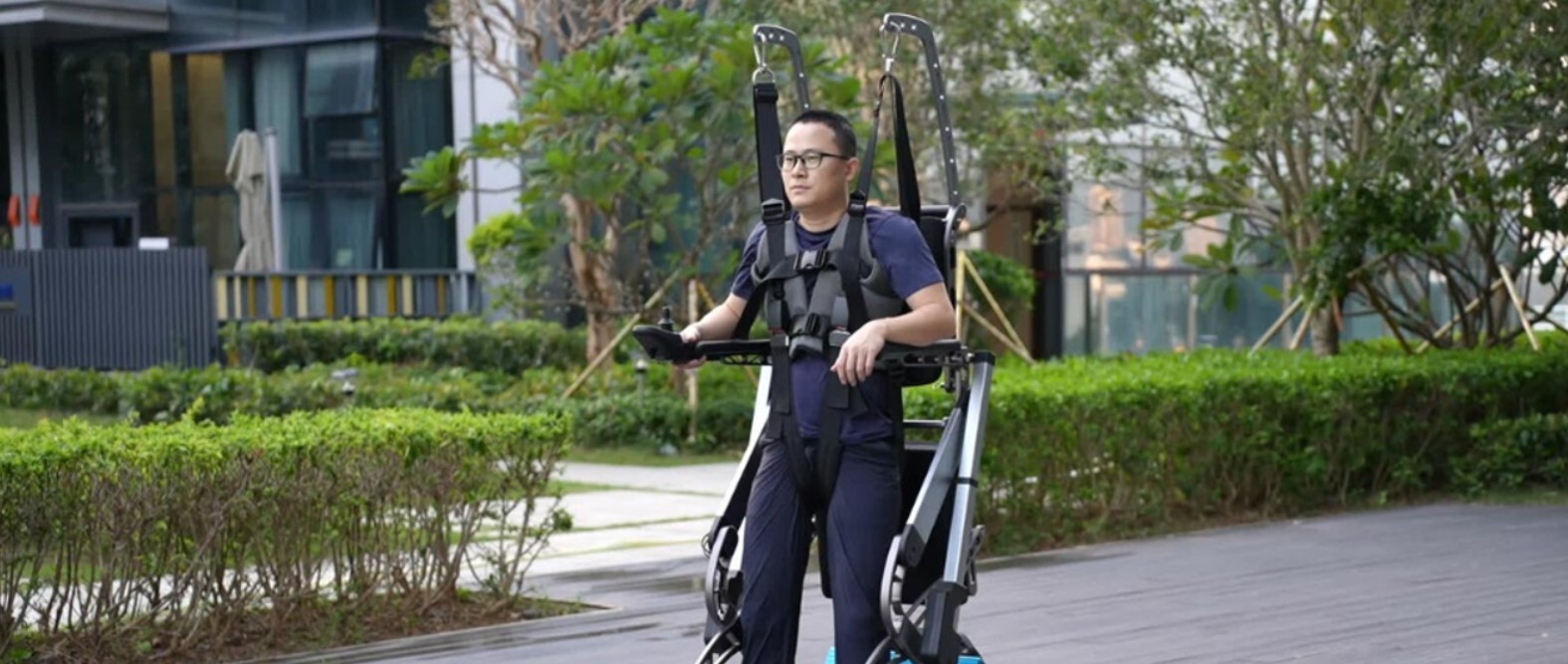
The StandNWalk Gait Trainer is one of the most advanced stroke rehabilitation devices available for home use. It allows patients to practice standing and walking in a controlled and supportive way. The design promotes proper posture and gait alignment, helping patients rebuild balance and confidence step by step. The adjustable support system provides safety and stability, which is particularly helpful for individuals who are still regaining lower body strength.
This stroke rehabilitation machine encourages natural walking motion, activating key muscle groups and improving circulation. By using the StandNWalk Gait Trainer as part of a daily therapy routine, patients can gradually strengthen their legs, hips, and core muscles, improving their overall mobility and endurance. For caregivers, it also provides an easier way to assist patients with gait training without excessive strain.
Different Types of Stroke Rehabilitation Tools and Devices
Stroke rehabilitation tools vary based on each patient’s recovery goals and mobility level. Common types of stroke recovery devices include upper and lower body exercise equipment, therapy aids, and adaptive tools designed to assist with daily living activities.
Exercise Equipment for Stroke Patients
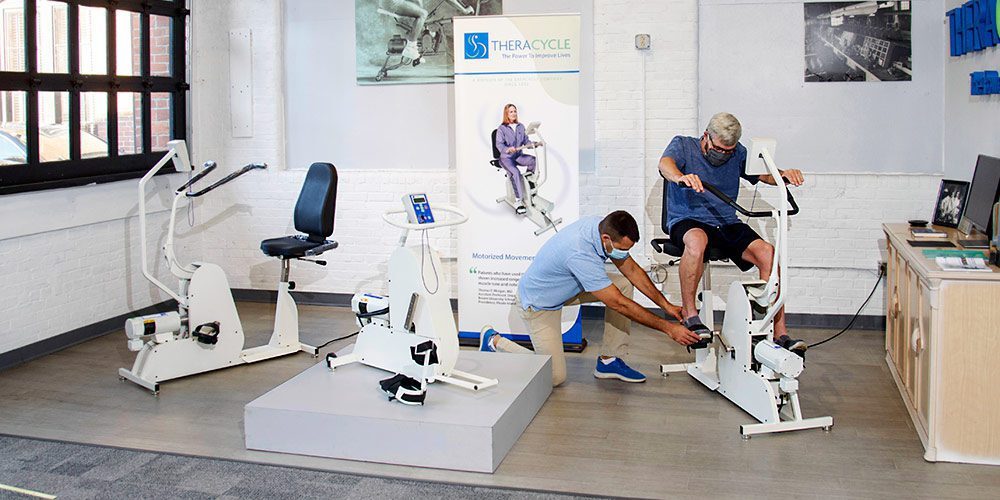
Regular movement is critical for muscle recovery and joint flexibility. Exercise equipment for stroke patients includes resistance bands, hand exercisers and assists, pedal machines, and seated exercise bikes. These tools can help strengthen weakened limbs and improve circulation while promoting coordination between the brain and muscles.
Stroke Therapy Equipment for Arm and Hand Recovery
Stroke therapy equipment for arm and hand recovery plays a crucial role in restoring strength, coordination, and fine motor skills after a stroke. Many stroke survivors experience weakness or limited movement in one side of the body, making daily tasks challenging. Using stroke rehabilitation tools such as hand therapy balls, grip trainers, resistance bands, and wrist exercisers helps reestablish control and improve muscle memory through consistent, repetitive movement. These stroke rehabilitation devices are easy to use at home and allow patients to continue their therapy routines independently or with caregiver assistance. By incorporating upper-body exercise equipment for stroke recovery into daily practice, patients can strengthen their arms, improve flexibility, and rebuild confidence in performing everyday activities.
Assistive and Adaptive Devices for Mobility
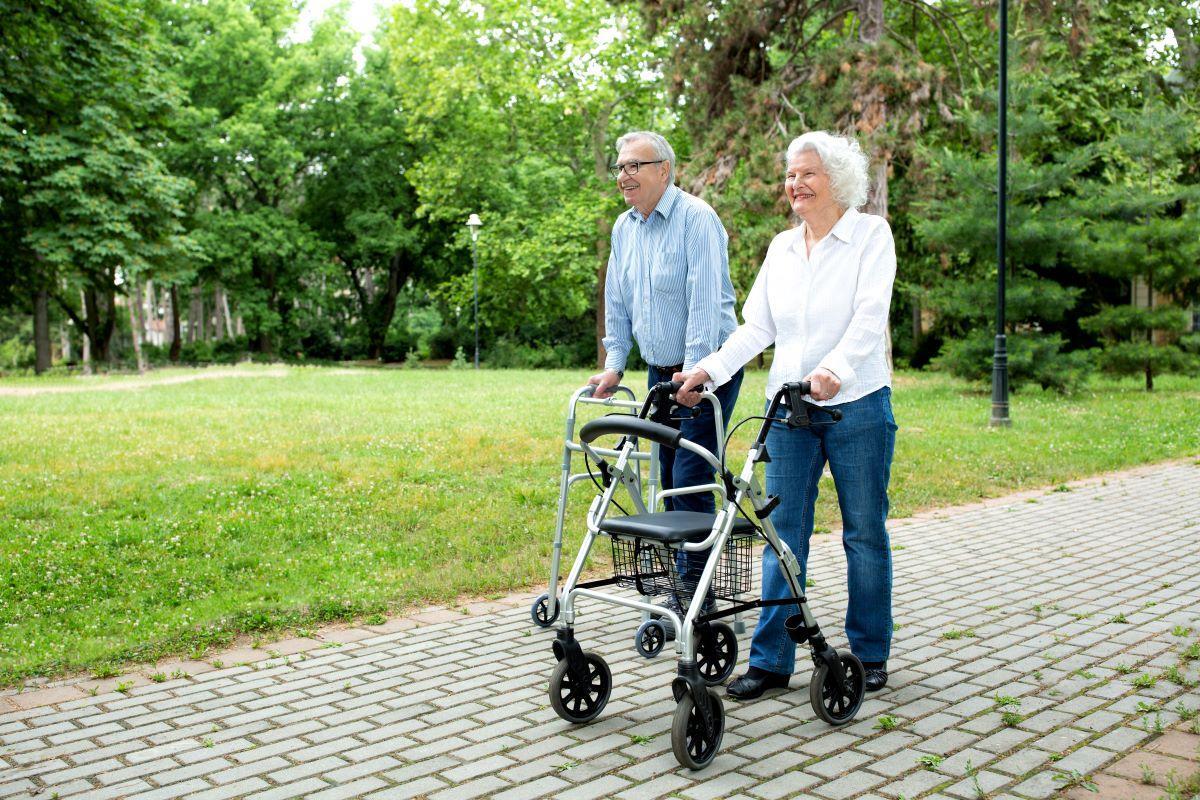
Adaptive equipment for stroke patients supports safe movement, stability, and independence in daily activities. These tools are designed to make rehabilitation and mobility more manageable while reducing the risk of falls or strain. Common types of adaptive devices include:
- Canes and walking aids: Provide balance and stability for individuals regaining mobility after a stroke.
- Walkers and rollators: Offer additional support and help maintain upright posture during walking exercises.
- Gait trainers like the StandNWalk: Promote proper walking mechanics and posture while allowing users to practice safe, assisted movement at home.
- Transfer aids: Assist with moving from bed to chair or wheelchair, reducing the risk of injury for both patients and caregivers.
- Bed handles and rails: Provide leverage and support for getting in and out of bed safely.
- Balance support tools: Help improve stability and coordination during stroke rehabilitation exercises.
These adaptive devices for stroke patients enhance safety and confidence, making home mobility and recovery more effective and comfortable.
Useful Equipment for Daily Living After a Stroke
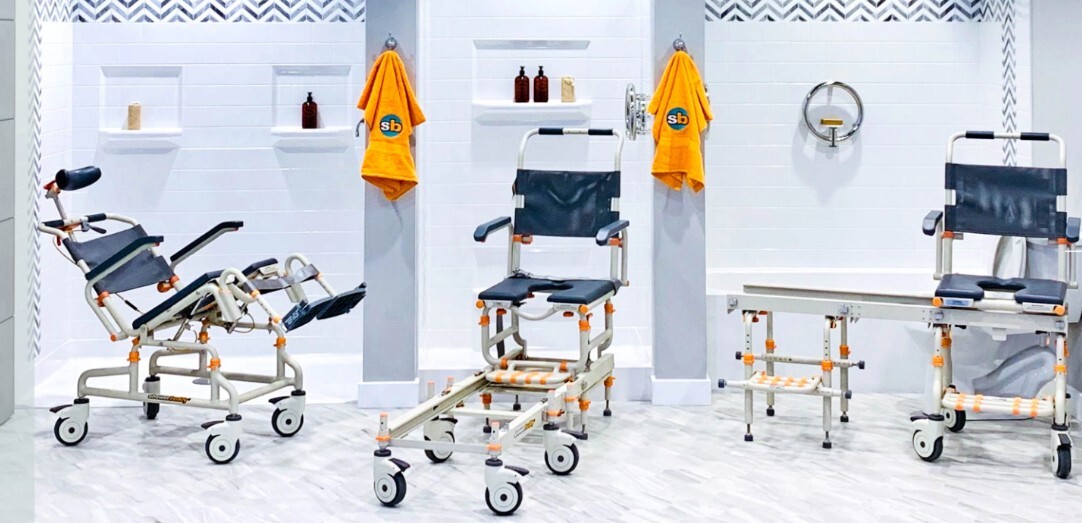
Recovering at home also means adapting to new ways of performing daily tasks. Useful things for stroke victims often include adaptive utensils, dressing aids, and shower chairs that make self-care safer and more comfortable. Occupational therapy equipment for stroke patients is designed to restore independence in dressing, grooming, and cooking. Simple devices such as button hooks, reacher grabbers, and slip-resistant mats can make a big difference in maintaining dignity and safety during recovery.
For stroke survivors with speech or coordination challenges, assistive technology such as voice-activated devices or adaptive keyboards can help maintain communication and engagement in daily life.
How to Recover Fast from Stroke at Home
Recovering quickly from a stroke requires patience, consistency, and the right combination of physical therapy, exercise, and adaptive equipment. Patients should focus on performing stroke rehabilitation physical therapy exercises every day, even in short sessions. Simple seated leg lifts, arm stretches, and hand exercises can help rebuild muscle control and coordination.
Using stroke rehabilitation tools at home such as resistance bands or the StandNWalk Gait Trainer provides structured support for these exercises. In addition to physical therapy, mental engagement is essential. Brain training games, puzzles, and repetitive movement tasks can encourage cognitive recovery and coordination between the mind and body.
Nutrition and hydration also play an important role in recovery. Eating foods rich in lean protein, vitamins, and omega-3 fatty acids supports brain repair and muscle rebuilding. Combining a balanced diet with consistent use of stroke recovery equipment and regular physical activity can help accelerate recovery progress.
The Role of Caregivers and Family Support for Stroke Victims
Having the right equipment is only part of successful stroke recovery. Support from family members and caregivers is equally important. Caregivers should ensure that the home environment is safe, with clear walking paths, grab bars in bathrooms, and adaptive equipment easily accessible. Encouragement and emotional support can also help stroke survivors stay motivated and positive throughout their rehabilitation journey.
The StandNWalk Gait Trainer makes it easier for caregivers to assist patients during walking sessions, reducing the physical strain involved in traditional gait training methods. By integrating this stroke rehabilitation equipment into a consistent routine, patients can practice walking daily in a safe and controlled way.
How to Choose the Right Stroke Recovery Equipment
When selecting equipment for stroke rehabilitation, consider the patient’s specific needs, physical abilities, and recovery goals. Stroke rehabilitation devices should provide both safety and motivation for continued practice. Adjustable, easy-to-use tools are ideal for home settings, allowing patients to exercise without constant supervision. Consulting a physical or occupational therapist can help identify which stroke rehab equipment will provide the most benefit for a particular stage of recovery.
Final Thoughts for Stroke Recovery Equipment
Stroke recovery is a gradual process that requires dedication, encouragement, and the right tools. Using equipment for stroke patients at home gives individuals the opportunity to continue therapy at their own pace and in a familiar environment. Devices such as the StandNWalk Gait Trainer, hand exercisers, and adaptive mobility aids play a vital role in rebuilding strength, balance, and confidence. With consistent effort, professional guidance, and the right stroke rehabilitation equipment, patients can regain independence and enjoy a better quality of life after stroke.
